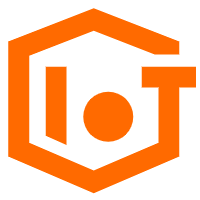In the past few decades, technology has developed by leaps and bounds. Organizations of all sizes and industries are using various IT solutions to help drive growth, profit, and productivity. A key innovation that many companies rely on is IoT devices. What is an IoT device? How do they help companies? What should you know about these devices?
The Internet of Things is abbreviated as "IOT", and Internet of Things devices are connected devices that can communicate with other devices and networks.
Depending on their shape and function, these devices can perform various tasks. Many IoT devices use their network connections to allow users to remotely access and operate the device, remotely access databases to obtain information, or receive manufacturer firmware updates.
There are many types of IoT devices on the market. Below is a list of IoT devices, covering several major categories:
This list is far from comprehensive-new IoT devices are constantly being created, and they will also have new uses. Although IoT devices are useful, they also have some major problems. In most companies, the biggest concern about IoT devices is usually their security.
There are many security issues with IoT devices, including:
Although security is the main concern of IoT devices, what about the aforementioned connection bottlenecks? When IoT devices send information requests to servers, they consume an astonishing amount of network bandwidth. In fact, IDC predicts that "by 2025, 41.6 billion connected devices or'things' will be in use and 79.4 megabytes (ZB) of data will be generated."
If the 79.4 megabytes (ZB) of data is divided by 41.6 billion IoT devices, this means that each device will generate an average of 1908.65 GB of data per year. In a year’s time, the proliferation of this situation means that the actual impact of any single device at any given moment may be minimal, but when multiple IoT devices are in a "high consumption" mode at the same time, this will Cause data bandwidth bottlenecks and congest the network.
One way to solve the problem of high bandwidth consumption of IoT devices is to spread the load. Instead of relying on a single central data center, companies can use hosted data centers at the edge of the distributed network to process data requests from IoT devices.
By placing additional data centers close to IoT devices, organizations can minimize the time between when these devices send a request and get a response. This helps prevent delays in workflows that rely on IoT devices.
In addition, by providing additional edge data centers, organizations can build some IT resilience and system redundancy. In this way, if a data center fails (due to a power outage, network infrastructure failure, cyber attack, or natural disaster), traffic and requests to that data center can be rerouted to other data centers. This can eliminate certain single points of failure and improve overall network reliability.
A common objection to using outsourced data centers at the edge of the network is that some data center service providers do not provide their customers with sufficient control or visibility into the data production environment, which leaves companies ignorant of their actual bandwidth requirements.
However, for some data providers (such as vXchnge), this is not a problem. Its on-site solution can provide companies with in-depth analysis of their hosted data center environment and provide reports on bandwidth, power consumption, and server processor usage. These reports enable companies to easily determine when they need to deploy more (or more Less) resources.
MQTT is a message protocol which support communication between IoT devices and the IoT platform, in this tutorial you will get some information on how.
The Internet of things (IoT) is revolutionizing all aspects of our global industry by connecting the digital and physical world.
Provides secure and reliable communication between devices and the IoT Platform which allows you to manage a large number of devices on a single IoT Platform.
A cloud solution for smart technology providers to quickly build stable, cost-efficient, and reliable ubiquitous platforms

1,303 posts | 459 followers
FollowNick Patrocky - August 26, 2022
Clouders - January 10, 2022
Dikky Ryan Pratama - May 17, 2023
Rupal_Click2Cloud - June 1, 2022
Alibaba Cloud Native - June 12, 2024
Alibaba Clouder - July 27, 2018

1,303 posts | 459 followers
Follow IoT Platform
IoT Platform
Provides secure and reliable communication between devices and the IoT Platform which allows you to manage a large number of devices on a single IoT Platform.
Learn More IoT Solution
IoT Solution
A cloud solution for smart technology providers to quickly build stable, cost-efficient, and reliable ubiquitous platforms
Learn More AliwareMQ for IoT
AliwareMQ for IoT
A message service designed for IoT and mobile Internet (MI).
Learn MoreMore Posts by Alibaba Cloud Community